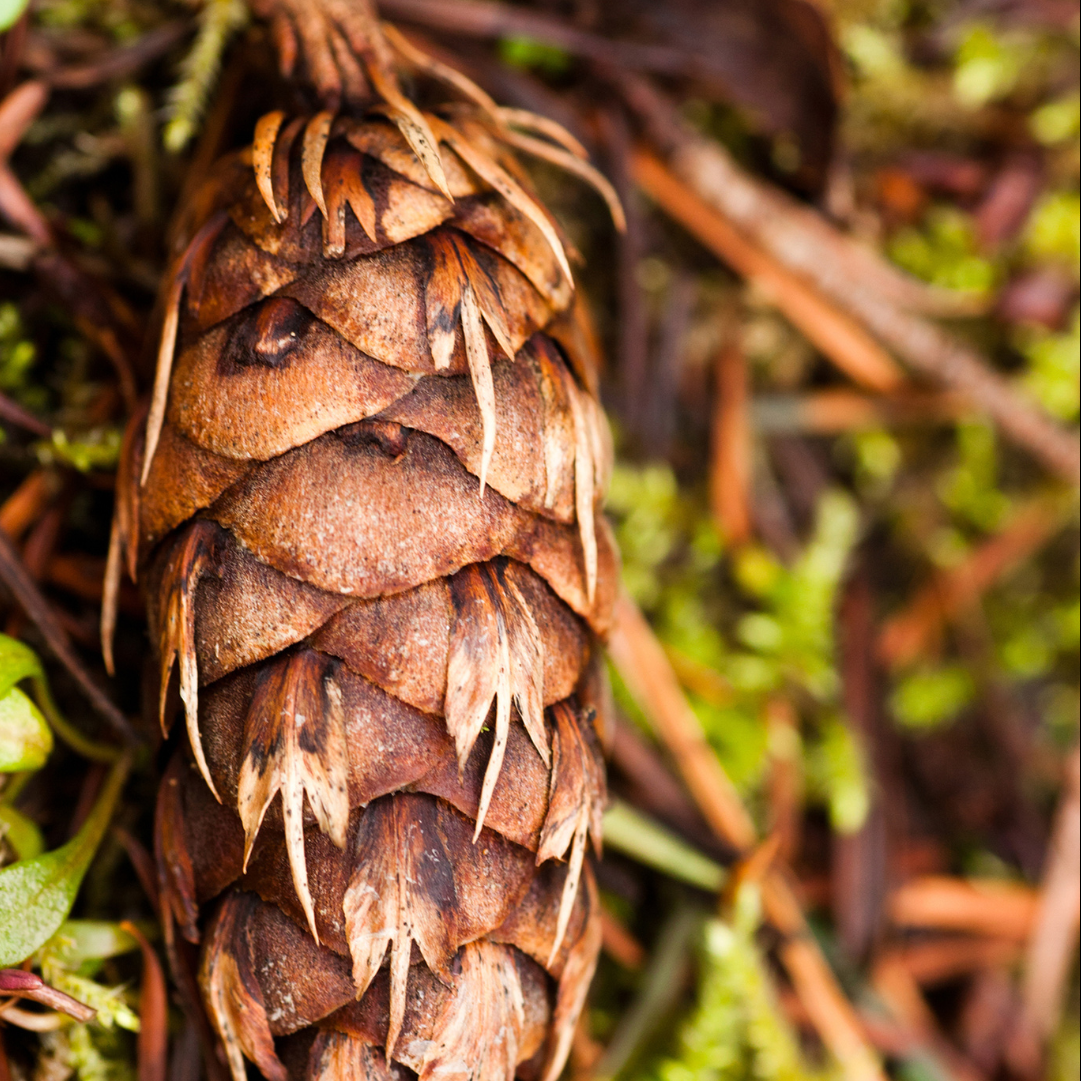”(Pseudotsuga menziesii)
GeorgeFlavour Fred
History & Identification
I use these needles in a few ways at present including; my liqueurs; syrups for a few outlets including @flatearthpizzas; an ingredient in curing; powdered into a sugar and blowtorched onto desserts; cakes; creams; custards; brewing; essential oils: and many many more.
In Native American folklore there is a lot of stories about the mouse and the nightly Douglas fir using it for food and taking protection. Another talks of lightning strikes and forest fires and animals fleeing and after asking all the trees for refuge the Douglas fir provided protection within the cones. Hence the bracts resembling the hind quarters of mice. (@charlotte_plantlore 
It’s a non native species introduced in the 1800’s by David Douglas a Scottish botanist best known for the namesake of the Douglas fir. He introduced many other conifers (240 approx) to Britain and many of my favourites like Noble Fir & Grand Fir to which nowadays support the timber industry but have also drastically changed the landscape. Timber uses include beams, veneers, furniture, cladding, decking and flooring with this fast growing soft wood (fast growing solution for timber industry). For this reason I do gather the needles but also just ask a few of my tree surgeon friends and it’s easy enough to get a source of the needles that otherwise are just left to break down after trees are felled for this timber.
These pyramid shaped conifers can grow up to 20-120m although the large ones are noted moreso on the coast in North America where they are native to. The young Douglas fir start off with grey-brown bark fills with gummy blisters and with growth the bark becomes very thick & deeply grooved ridges that are dark reddish brown.
The needles/leaves are 2-4 soft, linear & flat, pointed tip with silver stripes on the underside with a darker stripe in the middle. They often appear flat on the branch but are arranged spirally but appear in 2 rows due to twisting at the base of each needle. As it resembled many other conifer species the categorisation changed many times (19th century) which is why it’s now in the genus “pseudotsuga”. Fir cones grow upwards for instance so it’s not a true fir just by that identifier.
As it has many characteristics of firs (needle’s separately attached to the twigs) rather than pines or larches that have bundles (fascicles) of needles but also red buds in a little conical shape which distinguish it from true firs as they have sticky green buds. The male pollen ones are about an inch being yellow to deep red located on the branch tips. The biggest giveaway though is on the seed cones of the female as it has exerted bracts that look like the rear end of a mouse is popping out like they have all clambered into the safety of the cone as discussed earlier.


 DOUGLAS FIR
DOUGLAS FIR 
